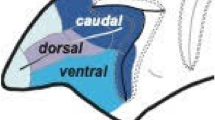Abstract.
This chapter presents a conceptual model of the representational and executive functions of the cortex of the frontal lobe derived from empirical evidence obtained principally in the monkey. According to this model, the neuronal networks of the frontal lobe that represent motor or executive memories are probably the same networks that cooperate with other cerebral structures in the temporal organization of behavior. The prefrontal cortex, at the top of the perception-action cycle, plays a critical role in the mediation of contingencies of action across time, an essential aspect of the temporal organization of behavior. That role of cross-temporal mediation is based on the interplay of two short-term cognitive functions: one retrospective, of short-term memory or sensory working memory, and the other prospective, of attentive set (or motor working memory). Both appear represented in the neuronal populations of dorsolateral prefrontal cortex. At least one of the mechanisms for the retention of working memory of either kind seems to be the reentry of excitability through recurrent cortical circuits. With those two complementary and temporally symmetrical cognitive functions of active memory for the sensory past and for the motor future, the prefrontal cortex secures the temporal closure at the top of the perception-action cycle.
Similar content being viewed by others
Author information
Authors and Affiliations
Additional information
Electronic Publication
Rights and permissions
About this article
Cite this article
Fuster, J. Executive frontal functions. Exp Brain Res 133, 66–70 (2000). https://doi.org/10.1007/s002210000401
Published:
Issue Date:
DOI: https://doi.org/10.1007/s002210000401



